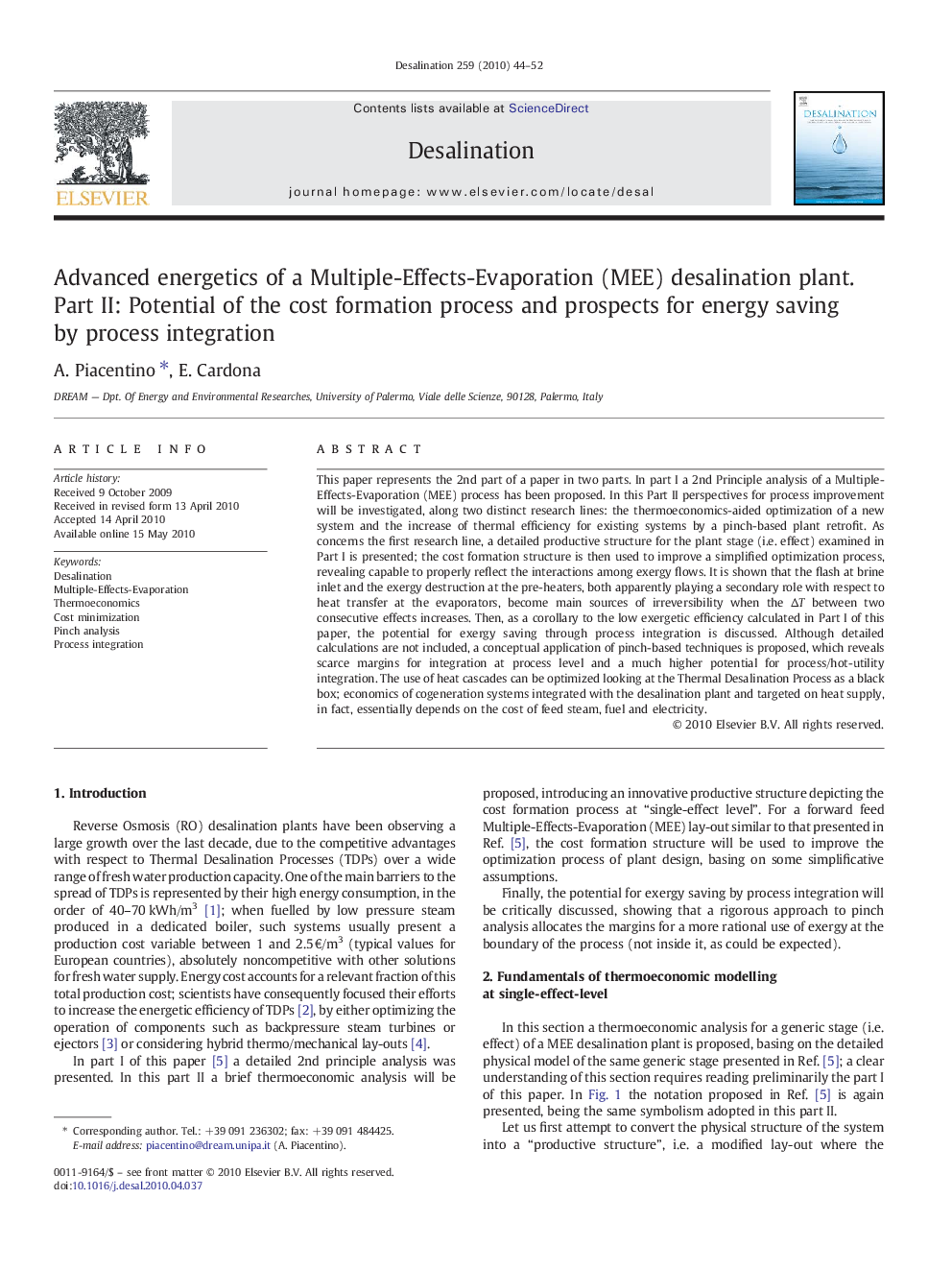| Article ID | Journal | Published Year | Pages | File Type |
|---|---|---|---|---|
| 625684 | Desalination | 2010 | 9 Pages |
This paper represents the 2nd part of a paper in two parts. In part I a 2nd Principle analysis of a Multiple-Effects-Evaporation (MEE) process has been proposed. In this Part II perspectives for process improvement will be investigated, along two distinct research lines: the thermoeconomics-aided optimization of a new system and the increase of thermal efficiency for existing systems by a pinch-based plant retrofit. As concerns the first research line, a detailed productive structure for the plant stage (i.e. effect) examined in Part I is presented; the cost formation structure is then used to improve a simplified optimization process, revealing capable to properly reflect the interactions among exergy flows. It is shown that the flash at brine inlet and the exergy destruction at the pre-heaters, both apparently playing a secondary role with respect to heat transfer at the evaporators, become main sources of irreversibility when the ΔT between two consecutive effects increases. Then, as a corollary to the low exergetic efficiency calculated in Part I of this paper, the potential for exergy saving through process integration is discussed. Although detailed calculations are not included, a conceptual application of pinch-based techniques is proposed, which reveals scarce margins for integration at process level and a much higher potential for process/hot-utility integration. The use of heat cascades can be optimized looking at the Thermal Desalination Process as a black box; economics of cogeneration systems integrated with the desalination plant and targeted on heat supply, in fact, essentially depends on the cost of feed steam, fuel and electricity.
